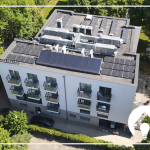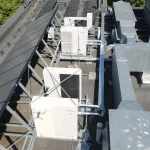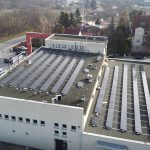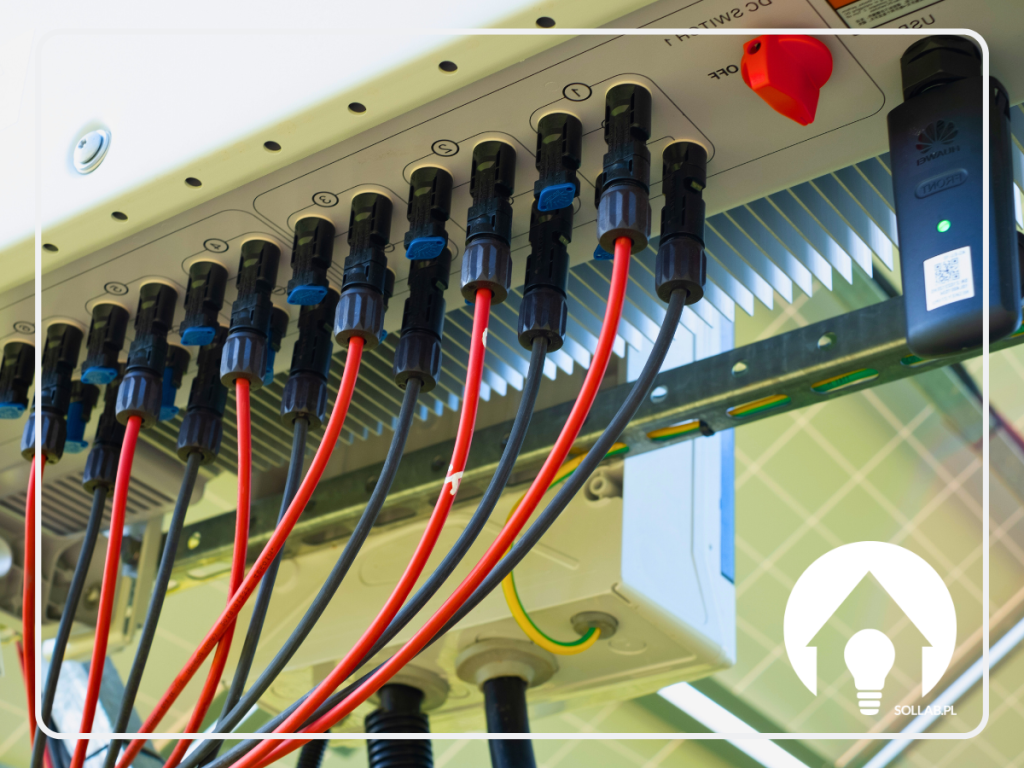Efficient heating system based on a cascade of heat pumps
Nowadays, there is an increasing focus on energy efficiency and an environmentally friendly approach to heating buildings. In the case of production and storage facilities, where operating costs and ensuring comfort play a major role, appropriate heating solutions are key. In this article, we will present an innovative heating system based on a cascade of heat pumps that reduces operating costs, ensures energy security and is easy to operate.
Larger properties, e.g. multi-family houses, guest houses, hotels, commercial or industrial buildings, have a higher demand for heating power than single-family dwellings. There is also greater heterogeneity in heat consumption for heating and hot water. A good solution in such cases is to use so-called cascade pumps, or more precisely a cascade system of heat pumps.
Cascade heat pumps - how do they work and how are they worth using?
Cascade heat pumps are an advanced solution that uses several heat pump units connected in a cascade. This involves two or more heat pumps being hydraulically connected and controlled by a single cascade control system. This activates sequentially depending on the given demand. To illustrate the principle of such a system, an example will be shown below:
Example of use in a hotel:
Facility type: A hotel with a variety of heating needs, including space heating, pool water heating, domestic hot water preparation and possible space cooling during the summer season.
Heat demand:
- Space heating: Winter requires an efficient heating system to maintain a comfortable temperature in rooms and communal spaces.
- Swimming pool water heating: The water in the pool must be kept at the right temperature to ensure that guests are comfortable when using the pool.
- Domestic hot water preparation: Provision of hot water to bathrooms, kitchens and other water consumption points.
- Room cooling: During the summer season, it may be necessary to cool certain areas, such as corridors or common rooms.
The use of cascade heat pumps:
- Unit serving space heating:
-
- A cascade heat pump with a unit designed to handle moderate-temperature heating provides heat to hotel rooms and communal areas.
- The unit that operates the heating of the pool water:
-
- Another cascade heat pump unit, optimised to handle lower-temperature water heating, delivers heat to the pool.
- Unit serving domestic hot water preparation:
-
- Another cascade heat pump unit, suitable for heating domestic water, provides hot water for taps, showers and other points of consumption.
Benefits of using cascade heat pumps:
- Versatility of applications:
-
- Cascade heat pumps make it possible to supply heat at different temperatures to different areas of the hotel simultaneously.
- Energy savings:
-
- By effectively adapting the operation of the units to specific needs, the system can operate more efficiently, resulting in energy savings.
- Comfort for guests:
-
- A stable and heat-adapted environment contributes to the comfort of guests, both in winter and summer.
- Sustainability:
-
- The use of cascade heat pumps in combination with renewable energy sources can help to reduce environmental impact.
If there is little demand, only one heat pump operates. If it is summer, it only runs for domestic water heating and the swimming pool. If there is a very high occupancy during the winter season and demand increases, then both pumps run at full capacity. It can also be advantageous to have a setting in which part of the pumps run to heat the building and one pump, for example, runs only to domestic hot water heating in the tray.
The use of several units working in a cascade arrangement gives flexibility to the system and helps to ensure that it matches the demand of the building and the users.
Cascade connection - what are the characteristics of pumps in such a system?
An important feature of cascade pumps is also safety. In the event of the failure of one unit, a power reserve is left with the remaining pumps. This makes it possible to secure the building with heat and domestic hot water in the event of a fault. This is why, if a heat pump with sufficient capacity for the building is available, builders opt for a cascade of pumps.
By being able to deliver heat at different temperatures, a cascade system can operate more efficiently, resulting in potential financial savings compared to traditional heating systems.
Use of electricity from photovoltaic installation
The use of photovoltaic electricity in heat pump cascades provides a smart and sustainable solution to efficiently use renewable energy sources for heating and cooling buildings. Below I outline the benefits and key aspects of this solution.
Benefits of using photovoltaic energy in heat pump cascades:
- Sustainable energy source:
- The use of solar energy to power cascade heat pumps contributes to the reduction of greenhouse gas emissions, which fits in with the sustainable development goals.
- Financial savings:
- Using renewable energy from photovoltaics can result in financial savings, especially if solar energy production exceeds current demand.
- Energy independence:
- Installing a photovoltaic system with a cascade of heat pumps can increase a building's energy independence, especially in the event of a grid failure.
- Efficient use of energy:
- Heat pump cascades are efficient in converting electricity into heat, making the use of solar energy more efficient.
- Lower operating costs:
- Reduction in operating costs associated with purchasing electricity from the grid.
Challenges and reflections:
- System performance:
- It is worth considering carefully whether the amount of energy generated from the photovoltaic panels is sufficient to power the heat pump cascade in different weather conditions and seasons.
- Variability of energy production:
- Solar energy production depends on weather conditions, which can affect the availability of energy to power heat pumps.
- Intelligent system management:
- Use of an energy management system that intelligently controls the operation of the heat pumps according to the availability of energy from the photovoltaic panels.
- Careful analysis of energy needs:
- Careful analysis of the building's energy requirements to adapt the photovoltaic installation and heat pump cascade to the actual needs.
The use of photovoltaic energy in heat pump cascades provides an efficient solution to heat the building and domestic water. Before implementing the system, it is advisable to consult with renewable energy specialists to tailor the solution to the specific local conditions and needs of the production and storage building.
Cascade systems made by Sollab:



















